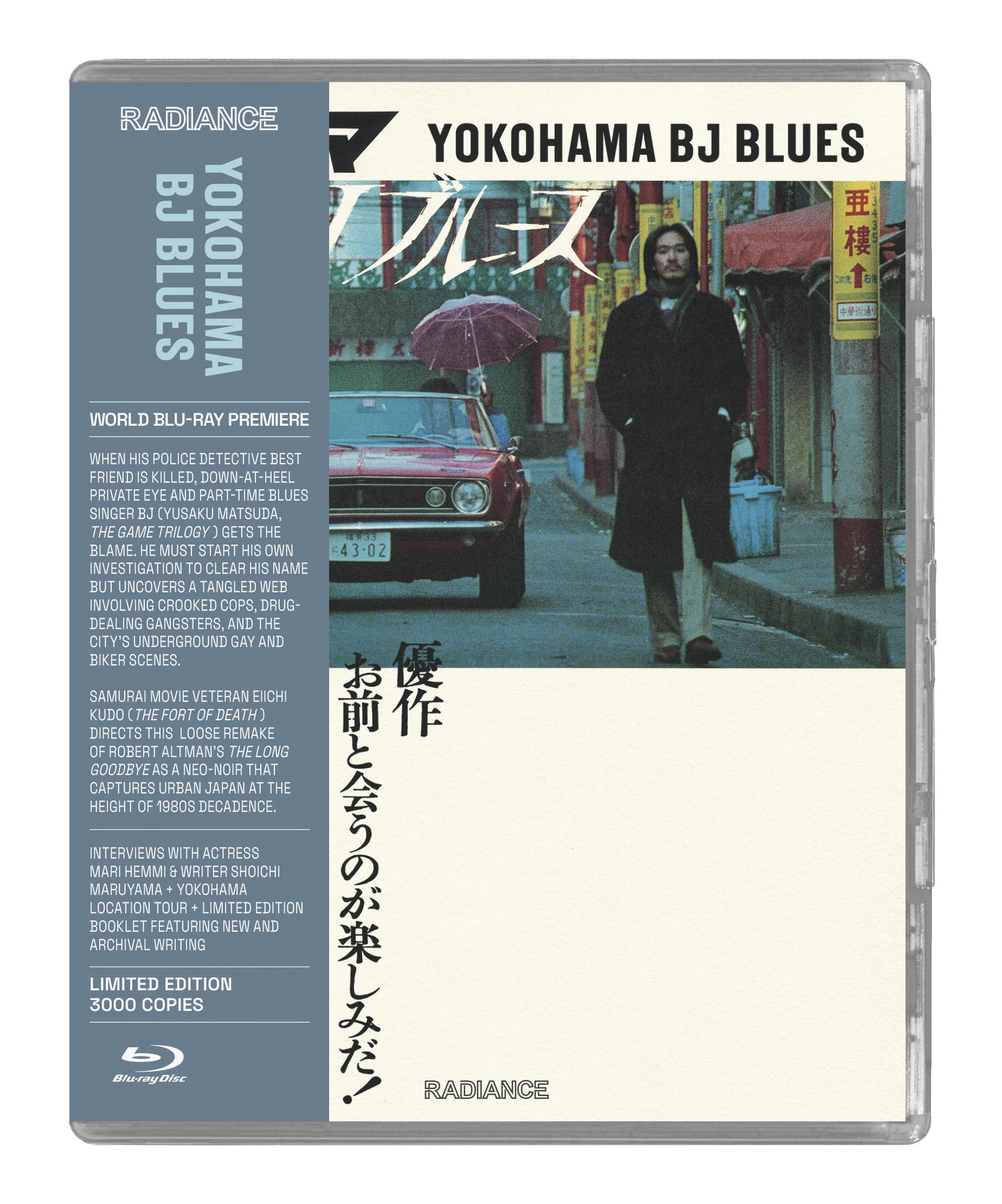BJ (Yusaku Matsuda) is a beaten down private detective who lurks in nightclubs singing the blues on the side. Although if you asked him, he’d probably tell you he’s a blues singer who happens to do a little P.I. work as a side hustle. Regardless, BJ finds himself embroiled in a killer case involving the death of his best friend, a cop, and he finds himself the main suspect. To clear his name and get revenge on his friend’s killer, BJ must prowl the seedy underbelly of Yokohama to root out the corruption and vice at the core of the crime.
Some films, when watched at a certain point in time, strike the perfect mood, capturing a moment and a feeling so well that they are cemented on your subconscious forever. That bleary time of night that’s so late it becomes early when the fuzziness around the edges of your vision start to blur into what passes for sleep when you are suffering from insomnia and everything stops making sense but everything makes total sense and the vibrato of the street hums through your soles up into your heart where you can’t hardly breathe it hurts so good… This is Yokohama BJ Blues. BJ much of the time doesn’t know where this trail is leading him and sometimes he doesn’t much seem to care. But BJ’s life is like quicksand, pulling him deeper into the dark, revealing all kinds of seedy secrets of what lies underneath. Vibe is everything here. BJ’s entire world is bathed in a twilight blue mirroring the melancholy blues that BJ belts out in dusty clubs late at night. It’s hard to believe that this moody, stylish neo-noir is orchestrated by Eiichi Kudo, director of samurai films like 13 Assassins and Fort of Death. It’s not hard to imagine the visual style of the film was informed by cinematographer Seizô Sengen whose career is chocked full of gritty crime thrillers. In an interview included on the disc with Yokohama BJ Blues‘ screenwriter Shoichi Maruyama he discusses how the film was influenced by William Friedkin’s Cruising, particularly in its lurid and seedy exploration of the gay underground (although honestly much less exploitive in my opinion than in Friedkin’s film), as well as Robert Altman’s The Long Goodbye. The Altman comparison is felt throughout this, particularly in the way that Yusaku Matsuda plays BJ in a very breezy, nonchalant way with very little agency of his own. I don’t want to talk about this one too much. Sometimes you just need to let the movie talk for itself.
The digital transfer for Yokohama BJ Blues, provided to Radiance by Toei is quite good. This film with its eternal blue twilight and dark and dreary corridors needs a really strong image to do it justice, and I think Radiance has delivered here quite nicely. The film is large clear of dirt and debris with nice grain levels that don’t feel too dense and a very nice color balance that does the cinematography justice. The Japanese mono audio also sounds quite clean with a bit of punch in the low end which helps during the bluesy musical numbers. We also get a nice set of meaningful extras. I’ve already mentioned the interview with screenwriter Shoichi Maruyama, and we also get an interesting interview with Mari Hemmi who played Tamiko in the film. Also included is a tour of Yokohama locations in the film by writer and Yokohama expert Toru Sano. The limited edition also includes a nice physical booklet with an essay by contemporary Asian cinema specialist Dimitri Ianni on the producer of Yokohama BJ Blues, Mitsuru Kurosawa, who played a very active role in getting the film made and was known as a very hands-on producer throughout his career. Like several other Radiance releases, also included is a review of the film at the time of its release (published by Kinema Junpo in 1981 and translated by Tom Mes). Interestingly even at the time, it seems that the film was appreciated for its uniqueness and masterful craft and ambiance, at least by this one reviewer.
Few films evoke such a perfect downbeat mood and aesthetic within the era it was released than Yokohama BJ Blues. It’s a shame more people haven’t heard of this film, but let’s hope that with this great release from Radiance that this moody masterpiece will gain more exposure.

